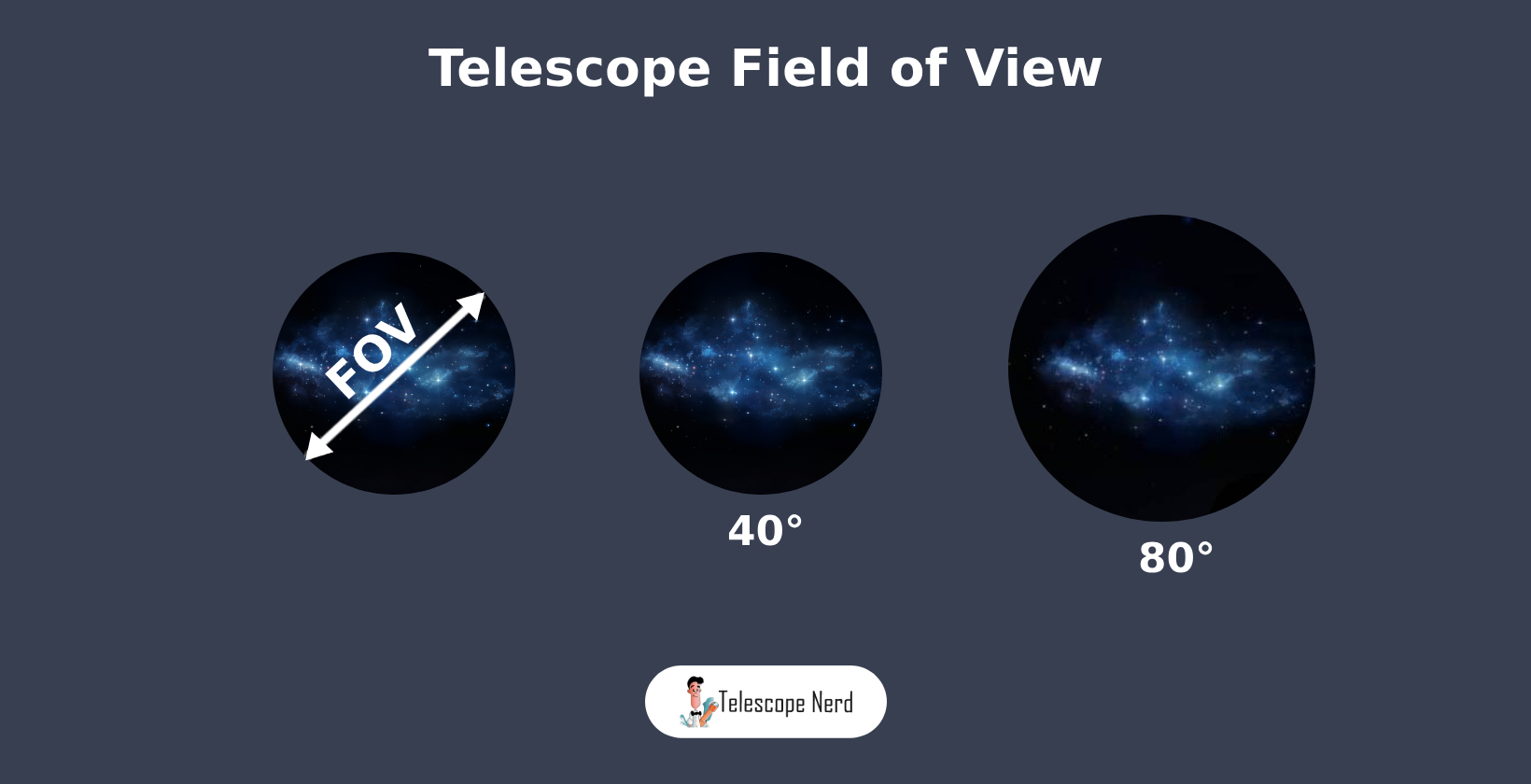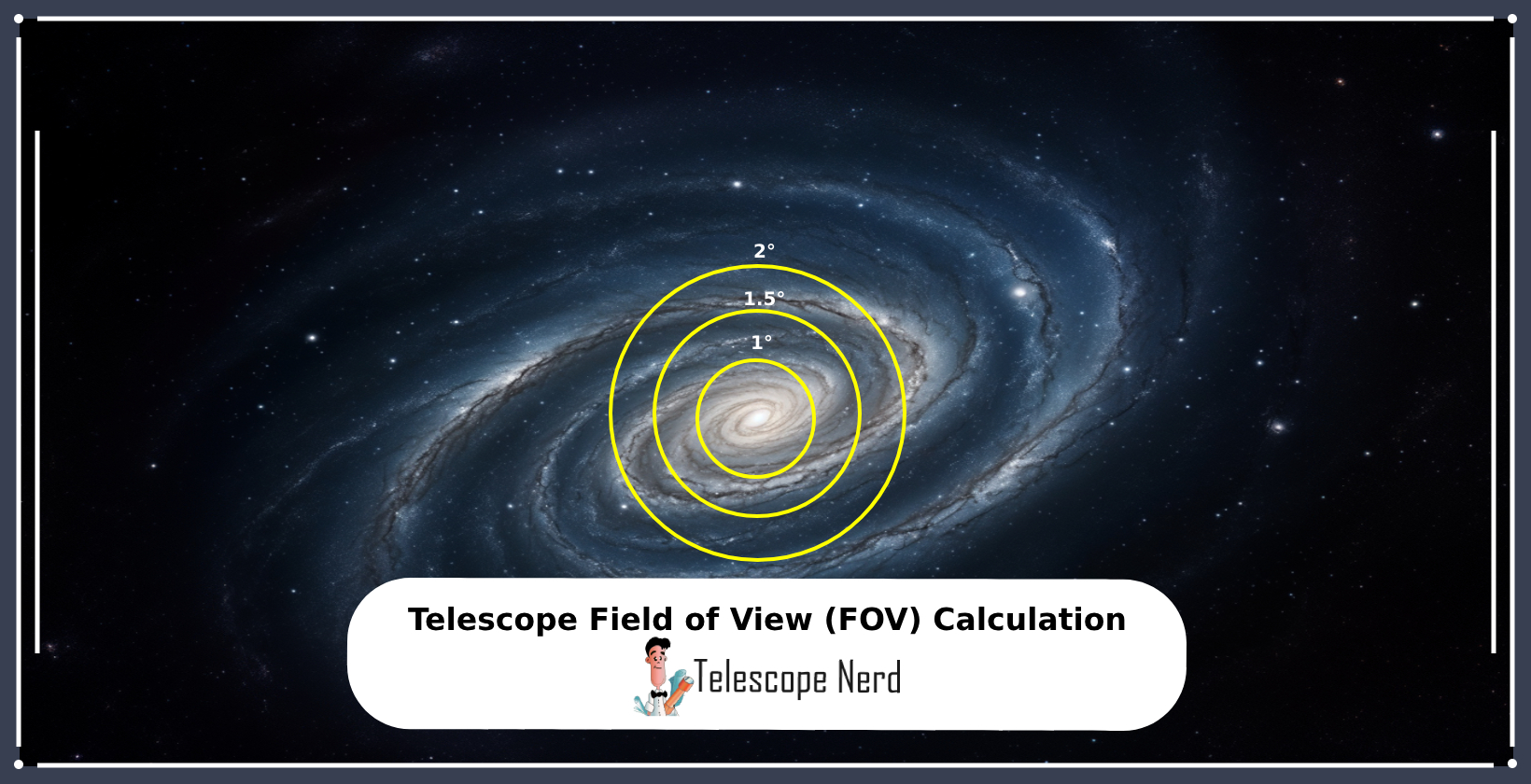Telescope Field of View (FOV) Calculation
The field of view (FOV) in a telescope defines the extent of the observable universe that is visible through the eyepiece at any given moment. Knowing the FOV allows astronomers to determine the ideal eyepiece for a specific observation. There are two distinct types of FOV: the apparent field of view (AFOV) and the true field of view (TFOV).
Calculation of the TFOV is done by dividing the AFOV of the eyepiece by the magnification of the telescope, or through the relationship of the focal lengths of the telescope and the eyepiece. The TFOV is typically expressed in degrees.
The FOV in the eyepiece is determined by its specific AFOV, and the choice of eyepiece thereby plays a vital role in the observational experience. The relationship between FOV and magnification is inversely proportional, such that an increase in magnification results in a narrower field of view, while a decrease in magnification yields a broader view.
What is Telescope Field of View?

The field of view (FOV) in a telescope refers to the extent of the observable sky that can be viewed at a single point in time. It’s quantified in units such as degrees, arcminutes, or arcseconds, and is influenced by the telescope’s optics, encompassing factors like the diameter of the objective lens or mirror and the eyepiece in use.
The FOV plays a pivotal role in observational astronomy as it dictates the range of celestial objects that can be observed. For instance, a telescope with a larger FOV enables the viewing of expansive celestial bodies like nebulae and galaxies, whereas a telescope with a smaller FOV is more suitable for observing smaller entities like planets and stars.
The apparent field of view (AFOV) refers to the perceived expanse of the sky covered by the eyepiece, while the true field of view (TFOV) represents the actual segment of the sky visible through the telescope. To illustrate, an eyepiece with a broad AFOV will give the impression of a larger sky, but the actual TFOV is smaller due to the magnifying effect of the telescope.
The ideal FOV for a telescope is contingent on the specifics of the observation. For example, a larger FOV will be more desirable for wide-field observations of large celestial bodies, while a smaller FOV will be more effective for detailed observations of smaller entities.
The calculation of the TFOV involves dividing the AFOV by the magnification of the telescope. This calculation helps astronomers optimize their observations based on the specific characteristics of the celestial objects they wish to study.
How to Calculate Telescope Field of View?
The field of view (FOV) of a telescope is calculated using either the eyepiece field of view and magnification, or the diameter of the field stop and focal length. The most common method to calculate the true field of view (TFOV) is to divide the apparent field of view (AFOV) by magnification, as seen in the formula below.
TFOV = AFOV / Magnification
For example, if an eyepiece has a field of view, or AFOV, of 50 degrees and a magnification of 25x, the true field of view is 2 degrees. This equation is expressed as (50 / 25 = 2). Knowing the TFOV of a telescope is crucial to selecting the right optics based on specific observational goals, making it a crucial metric for astronomers.
Though dividing AFOV by magnification is a simple and widely used method of calculation, it is not exact. Telescope optics vary in measurement by up to 5%, which skews the accuracy of the calculation. For a more accurate calculation, astronomers use the field stop diameter and focal length to calculate FOV.
Astronomers can also use an online field of view calculator to compute the TFOV of a telescope based on the specifications of the telescope and eyepiece.
How to Calculate Telescope Field of View From Focal Length?
To calculate the telescope FOV from focal length divide the eyepiece field stop (mm), or AFOV by the telescope’s focal length (mm), then multiplying by 57.3, as seen in the formula below.
FOV = (Eyepiece Field Stop Diameter / Telescope focal length) x 57.3
The value 57.3 is used because there are 2π radians in a full circle of 360 degrees. Dividing 360° by 2π yields about 57.2958° per radian, allowing astronomers to calculate their TFOV in degrees. For example, a telescope with an eyepiece field stop diameter of 35mm, and a focal length of 1000mm will yield a 2.0055-degree TFOV. This equation is expressed as ([35 / 1000] x [57.3] = 2.0055).
The eyepiece field stop refers to the diameter of the image formed by the telescope’s objective, while the telescope focal length is the distance from the objective to the point where it forms an image.
The FOV is a crucial aspect of observational astronomy as it determines the range of celestial objects that can be observed. A larger FOV allows for the observation of larger celestial objects, such as nebulae and galaxies, while a smaller FOV is better suited for observing smaller objects, such as planets and stars.
When calculating FOV, it’s important to distinguish the difference between the apparent field of view (AFOV) and the true field of view (TFOV). The AFOV is the angle of the sky that appears to be covered by the eyepiece, while the TFOV is the actual portion of the sky that is seen through the telescope. For example, a wide AFOV eyepiece will make the sky appear larger, but the actual TFOV is smaller due to the telescope’s magnification.
The optimal FOV for a telescope depends on the type of observations being made. For example, a larger FOV is preferable for wide-field observations of large celestial objects, while a smaller FOV is better for detailed observations of smaller objects. By understanding the relationship between FOV and viewing experience, astronomers are able to select the best eyepiece for their observational goals.
What is Telescope Eyepiece Field of View?
The field of view of a telescope eyepiece is the angular extent of the sky that is observed through the eyepiece. It is influenced by the eyepiece’s design and is typically provided by the manufacturer.
The eyepiece of a telescope magnifies the image formed by the telescope’s objective lens or mirror. The eyepiece is the part of the telescope that observers look through. The eyepiece plays a significant role in determining the magnification, field of view (FOV), and overall viewing experience.
The FOV of the eyepiece impacts the overall FOV of the telescope. An eyepiece with a larger FOV will yield a larger overall FOV for the telescope, facilitating the observation of larger celestial objects. On the other hand, an eyepiece with a smaller FOV will result in a smaller overall FOV, which is more suitable for observing smaller celestial bodies.
The FOV of an eyepiece is calculated using the formula: FOV = (Eyepiece field stop / Eyepiece focal length) x 57.3. The eyepiece field stop is the diameter of the image formed by the eyepiece, and the eyepiece’s focal length is the distance from the eyepiece to the point where it forms an image. The factor of 57.3 is used to convert the result from radians to degrees.
The magnification of a telescope is determined by the ratio of the telescope’s focal length to the eyepiece’s focal length. Therefore, the choice of the eyepiece significantly affects the magnification and, consequently, the field of view and the types of celestial objects that can be observed effectively.
What is the Relation Between Magnification and Field of View?
Magnification and field of view (FOV) in a telescope share an inverse relationship. This means that as the magnification increases, the FOV decreases, and conversely, as the magnification decreases, the FOV increases. This relationship stems from the fact that as one increases the magnification, the telescope effectively zooms in on a smaller section of the sky, thereby reducing the FOV.
Magnification in a telescope refers to the degree to which the image of an observed object is enlarged compared to the naked eye. It’s a crucial factor in observational astronomy as it affects the level of detail that is seen when observing celestial objects. Higher magnification allows for more detailed observation of smaller and distant objects, while lower magnification is better for larger or closer objects.
The magnification in a telescope is determined by the focal length of the telescope and the eyepiece. To calculate the magnification, divide the telescope focal length by the eyepiece focal length. For instance, if a telescope has a focal length of 1000mm and is used with an eyepiece with a focal length of 10mm, the magnification would be 1000 / 10 = 100x. At 100x magnification, the field of view would be smaller than at 50x magnification, because magnifying an image presents a smaller portion of the sky. This allows for more detailed observation of smaller celestial objects.

